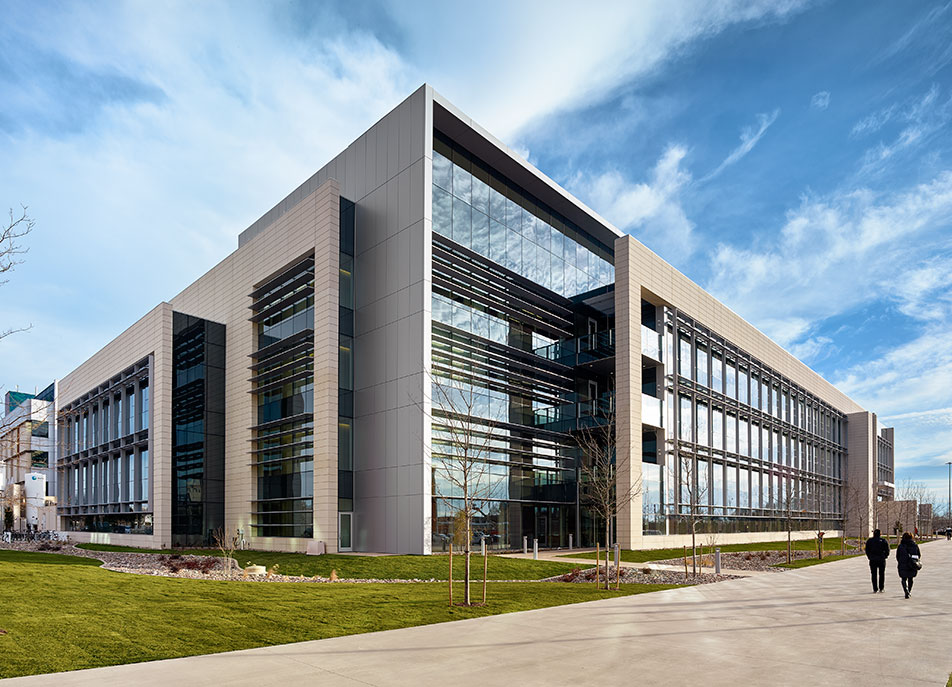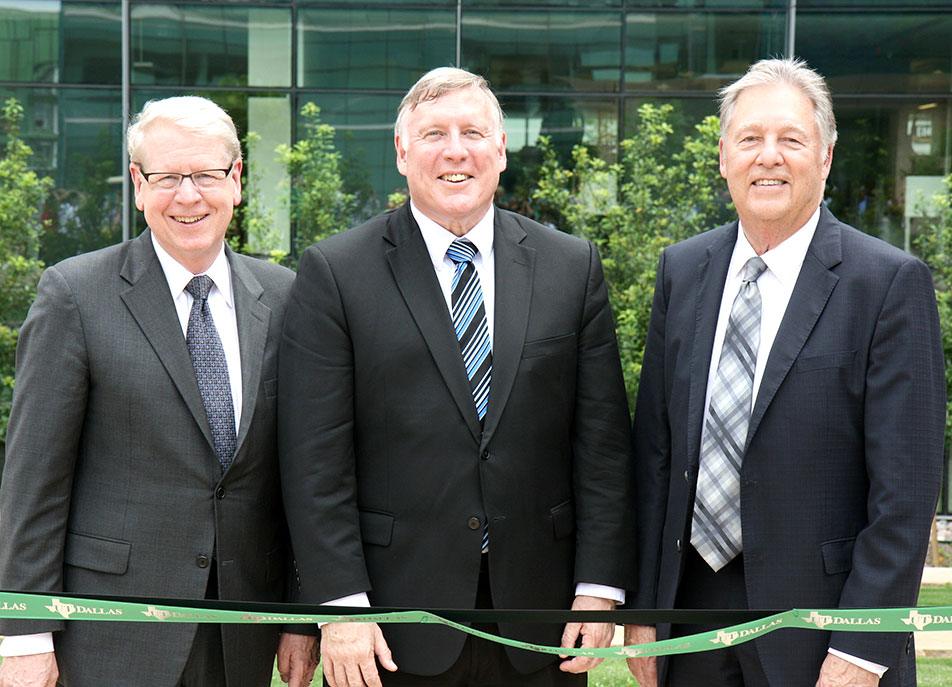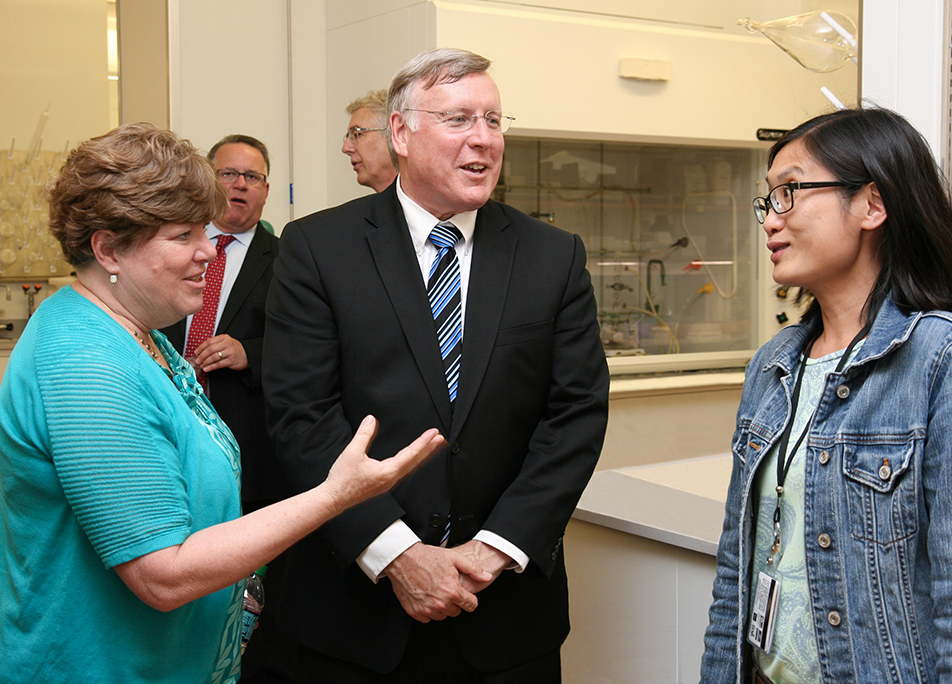With a focus on collaboration and world-class research, UT Dallas administrators and community leaders recently marked the official opening of the University’s new Bioengineering and Sciences Building (BSB).
The 220,000-square-foot structure is the University’s largest academic building. It houses programs in bioengineering and neuroscience, as well as research space for related programs in biology and chemistry.
At a dedication ceremony for the new building, speakers from UT Dallas, The University of Texas System and Richardson community expressed enthusiasm about the research that would occur there.
“I’m excited about what can happen in buildings like this. I think there’s going to be a Nobel Prize winner who’s going to come from this building,” Richardson Mayor Paul Voelker said.
Dr. David E. Daniel, deputy chancellor of the UT System and former UT Dallas president, said he was pleased to return to the campus and see the completion of such an important facility.
“It ended up the way we had intended — a place with great research space for leading faculty, students, and postdoctoral fellows, along with some administration and education,” Daniel said. “It’s a beautiful building, but one that’s also very functional and efficient.”
Like its neighboring building, the Natural Science and Engineering Research Lab, the Bioengineering and Sciences Building is built for collaboration, with labs and professors from multiple disciplines housed near one another.
“It’s the interdisciplinary nature of the building that makes it so special,” said Dr. Bruce Novak, dean of the School of Natural Sciences and Mathematics. “Already, I have young faculty coming to me saying, ‘I have four new collaborations from being in this building for just a short period of time.’ That is a real mark of achievement in the design of the building, the envisioned occupation of the building and our belief in interdisciplinary research.”
An example of that collaboration is a project involving professors from the School of Behavioral and Brain Sciences, the Erik Jonsson School of Engineering and Computer Science, and the School of Natural Sciences and Mathematics.
Dr. Ted Price, a neuroscience associate professor, is partnering with Dr. Zach Campbell, a molecular biology and biochemistry assistant professor, and Dr. Joe Pancrazio, associate provost and bioengineering professor, in a project that uses innovative measurements of neural activity for screening novel pain therapeutics.
Dr. Hobson Wildenthal, UT Dallas president ad interim, credited Pancrazio and acting Provost Inga Musselman for their efforts in planning such a functional and efficient building.
“Thanks to Inga and Joe’s diligence, imagination and diplomacy, we got it exactly right. I expect to see tremendous research and educational success come from the BSB,” Wildenthal said.
UT Dallas deans welcomed the new facility, saying it will pave the way for increased scientific research.
“The BSB surely will accelerate our progress toward a leadership role in scientific research on the fundamental processes of the brain and nervous system, and on diseases and pathologies of the brain and nervous system. These are among the greatest challenges our society will face in the coming decades,” said Dr. James Bartlett, interim dean of the School of Behavioral and Brain Sciences. The school’s previous dean, the late Dr. Bert Moore, also was involved in planning the research building.
Dr. Mark W. Spong, dean of the Jonsson School, said the building comes at just the right time.
“With the opening of the BSB, UT Dallas now has world-class research labs to support biomedical engineering research and help us to recruit even more top faculty and students from around the world,” he said.
The next major academic facility planned for the campus is a new engineering building, which will be on the site of the Alexander Clark Center. Construction on that building is scheduled to begin this fall, with completion expected by the start of fall 2018.




